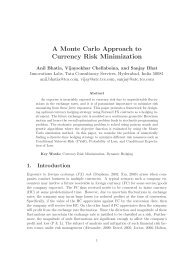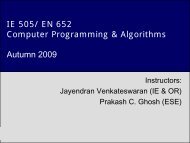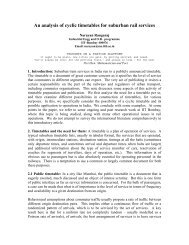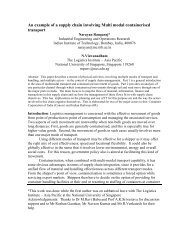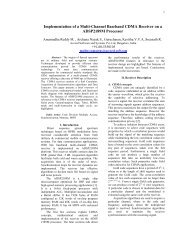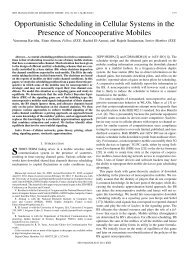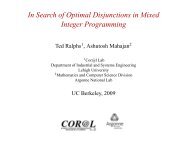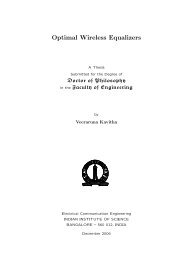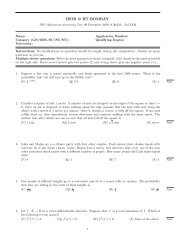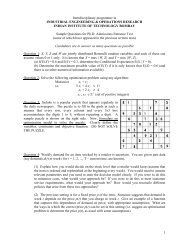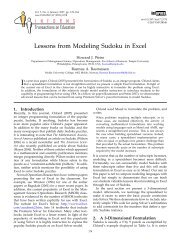Simulation of Multiple Line Rail Sections - IEOR @IIT Bombay ...
Simulation of Multiple Line Rail Sections - IEOR @IIT Bombay ...
Simulation of Multiple Line Rail Sections - IEOR @IIT Bombay ...
You also want an ePaper? Increase the reach of your titles
YUMPU automatically turns print PDFs into web optimized ePapers that Google loves.
ISCI 2012 8<br />
Table 1: Fixed time strategy results<br />
up Headway down Headway Nu Nd W AT Tu W AT Td Direction <strong>of</strong> 3 rd line<br />
5 5 3.270 5.810 17.403 19.482 up<br />
5 6 3.270 5.273 16.132 18.366 up<br />
6 5 2.727 5.810 17.570 18.442 up<br />
7 5 2.455 5.810 17.948 17.820 down<br />
8 5 2.182 5.810 18.023 17.440 down<br />
9 5 1.909 5.810 18.075 17.221 down<br />
9 8 1.909 4.727 15.000 15.011 up<br />
10 13 1.636 3.909 13.201 13.123 down<br />
10 14 1.636 3.909 13.023 12.921 down<br />
11 7 1.636 5.000 15.590 15.385 down<br />
12 10 1.360 4.180 14.123 14.027 down<br />
13 12 1.360 3.909 13.626 13.508 down<br />
14 13 1.360 3.909 13.428 13.147 down<br />
15 16 1.091 3.636 13.367 13.367 -<br />
16 15 1.091 3.636 13.510 13.266 down<br />
6.2 Variable time<br />
In this strategy, the traffic intensity is calculated every hour. If the traffic intensity is<br />
more than the calculated K and L values(as described in section 6.1) then the direction<br />
<strong>of</strong> the third line is changed. The underlying assumptions are same as discussed in section<br />
6.1.2. The experimental results for this strategy have been discussed in section 7.2.<br />
7 Experimental Results<br />
7.1 Fixed time strategy<br />
7.1.1 Varying the headway <strong>of</strong> freight trains<br />
The approach used in the experiments related to table 1 is that, if for certain period <strong>of</strong><br />
time we find the up traffic heavier than the down traffic above a threshold, we dynamically<br />
change the direction <strong>of</strong> the third line from down to up direction (if required). That is we<br />
keep monitoring the values for the traffic and determine the direction <strong>of</strong> the third line.<br />
(The values obtained in Table 1 are as per the calculations shown in section 6.1.1)<br />
The static allocation <strong>of</strong> direction for third line, we do a pre-analysis <strong>of</strong> traffic and fix<br />
a schedule for the third line. Say for example, for half an hour the third line is in up<br />
direction followed by half an hour for which the third line is in down direction, followed<br />
by one hour for which third line can be used in both the directions.<br />
Unscheduled trains are fired for an interval <strong>of</strong> 1 hour. We can see that the direction<br />
<strong>of</strong> the third line is changed when the difference between the traffic measures Nd - Nu<br />
becomes as greater than or equal to K we will want to change the direction <strong>of</strong> the 3 rd<br />
from up to down.<br />
In the table 1 we have not specified the results for all the up headways and down<br />
headways.This is because, as the down head way increases, or the down traffic decreases,<br />
the usage <strong>of</strong> third line changes from down direction to up direction. However, if we reach<br />
a stage where W AT Tu and W AT Td both are equal, that means even if we further reduce



